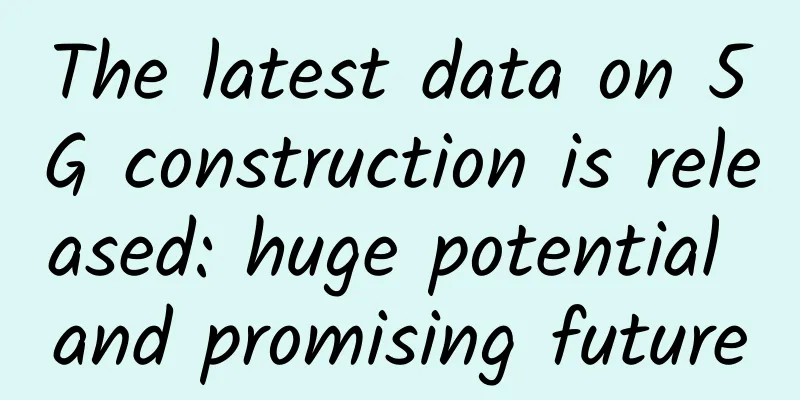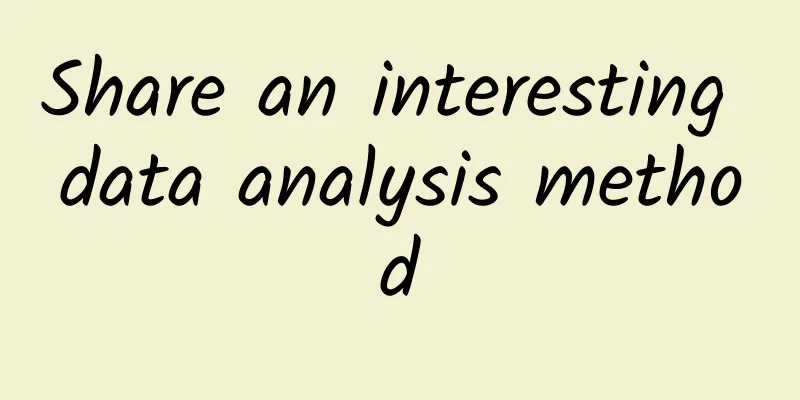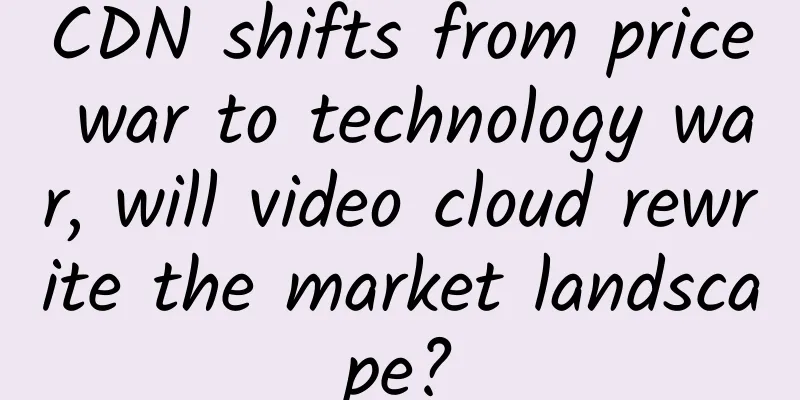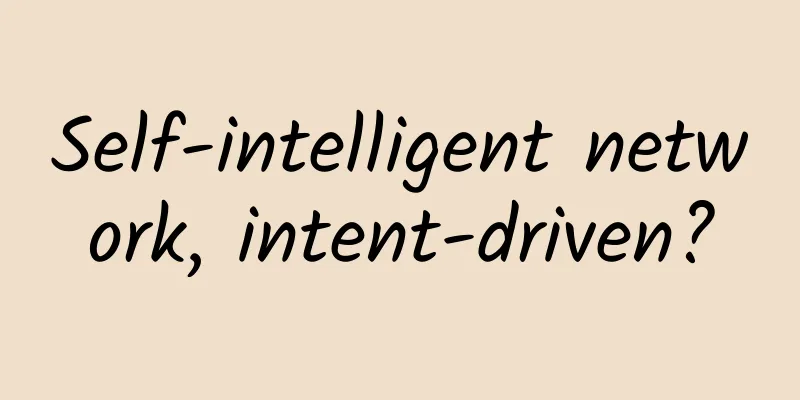Do you have a good understanding of the Internet of Things? Check out these five revolutionary ideas

|
ABI Research shows that the country's IoT service revenue is growing faster than any other major country and will exceed $41 billion in 2020. Do you have a good understanding of the IoT? Next, I will show you what the IoT really looks like. Predictions and opinions about the Internet of Things We may have all heard the prediction that the Internet of Things will become an unstoppable trend by 2050, relying on countless objects and countless funds. However, with Gartner predicting that the number of connected "things" will reach 25 billion by 2020, people have begun to pay close attention to the opportunities and challenges that the advancement of the Internet of Things brings to enterprises.
But these predictions alone don’t tell the full story. To truly unlock the potential of the Internet of Things, you must overcome data challenges, which are even more important than solving problems with the “things” themselves. The best example of this challenge is the "last mile" data problem, such as how to extract data from devices or remote platforms and interpret it for improved productivity and optimal performance. Whether it is a connected home or an industrial-grade solution, after the data is collected, it is often difficult for people to display the information in the data in an easy-to-use way for exploration. For the Internet of Things, it is necessary to truly see and interact with data Think back to when Steve Jobs first introduced the iPhone. He provided a reason for the large touch screen: every app needed its own user interface. A similar reason applies to analytics. Every question we ask of data requires its own chart and visualization; the explosion of sensor data that forms the foundation of the Internet of Things requires even more charts and perspectives. Unfortunately, most IoT applications use one-size-fits-all views, or "closed-end dashboards." They serve no purpose other than answering a set of predetermined questions. These tools are far from flexible enough to meet the needs of users. “Drillability” is critical to the usefulness of IoT data. For example, you might be able to use data from a failed engine for an IoT application to predict the frequency and type of future failures. But what if you want to see the specific component that failed? To answer this very natural follow-up question, interactivity and sharing capabilities are essential. Ideally, users engage in casual yet deep conversations with their data—and other data explorers—so that everyone can discover the arrangements and patterns that drive change. In the Internet of Things, combination can improve data quality Closely related to these deeper questions is the second key factor for IoT success: integration. Interactive data analysis can provide answers, as can the combination of IoT data with other contextual information. Let’s start with a consumer example, such as combining Fitbit data to explore potential correlations between fitness regimen and sleep patterns. Now, imagine finding enterprise-level insights by blending disparate data. Embedded sensors in jet engines can help predict when an engine will need maintenance. It can prevent failures, save billions of dollars, and even save lives. When combined with other information, it can also help us make better budgeting decisions for each product or region. The understanding of IoT should focus on iteration and optimization We live in a world where the phrase “best data” is increasingly an oxymoron. No matter how well your data is structured, it’s likely stored in data sources you can’t connect to, is missing key elements, or isn’t in a format that supports deep analysis. These shortcomings also apply to IoT applications, especially without consensus on standards that support device interoperability. To avoid incomplete data paralyzing your business, you must iterate to find the right answers. This is especially true for companies that don’t have large volumes of data to mine. Some organizations are focusing on projects that use simple sensor-based data streams to drive simple insights and enable early adoption of analytics. These small initiatives have a lower barrier to entry and help build momentum for larger challenges. During the iterative process, you discover that “good enough” data is often sufficient to answer almost any question directionally. In addition, by better understanding data gaps, you can address process issues, improve how data is captured and ingested, and get closer to actionable insights. The Internet of Things needs to embrace data gravity Do you track website clickstreams or measure consumer sentiment? If so, you have external data that is being generated and stored in the cloud. Why? Reduce overhead, reduce startup time, and scale rapidly. Constellation Research predicts that by 2020, 60% of mission-critical data will be located outside the company - in just three years, more than half of data will be generated externally. What does this mean for IoT analytics? In the past, business data was generated behind internal firewalls—hence the existence of local data warehouses, administrators, and analytical tools. Now, your organization must actively adopt a platform that adapts to data gravity and performs and manages analytics where the data resides. Once you see how quickly tools hosted in the cloud can generate data, you will begin to understand data gravity. But transitioning to cloud-based BI doesn’t mean it’s a one-time thing. Remember that data gravity affects the location of analytics. So if data is stored across cloud and on-premises, analytics needs to offer a hybrid solution. Cloud services are designed to support your business needs, not an either-or solution. The potential of IoT is not about tools, but about platforms IoT data often comes from different sources and is spread across multiple systems, both relational and non-relational, such as Hadoop clusters, cloud warehouses, and NoSQL databases. So if you think you can rely on one, cookie-cutter IoT tool to get you from data to insights, forget it. To achieve the best analytics results, you need a reliable data preparation and enrichment method, scalable storage, a catalog to support governance, and finally an intuitive analytics platform for end users to discover insights. Modern organizations combine the best solutions into an agile stack that can be adjusted as needs change. These needs depend on many factors, including user roles, volume, frequency of access, data velocity, etc. This stack is architected to fit the use case and forms the foundation of your data strategy. Its flexibility ultimately drives technology selection. Summarize So what’s the most important takeaway for an analytics leader or CIO preparing to implement an IoT analytics initiative? Define your platform vision. This mindset may seem overwhelming at first, but remember that you can scale the stack as needed: build on the stack’s modules to incrementally achieve your plan. Many decisions and actions are undoable, and you can correct your course as you gain more information. You’ll soon see measurable results in your platform analytics. |
<<: 2018 Trends: What will the future hold for AI and IoT?
>>: What is the difference between Industrial IoT and Consumer IoT?
Recommend
WiFi stuck, maybe it's the wireless network card
In the new year, WiFi network should have a new e...
Operators and the Internet are facing a turning point: the number of mobile phone users in the country has decreased by 20,000 in one day
Although Internet company stocks have skyrocketed...
How to improve WiFi quality without increasing budget? 6 tips to improve enterprise LAN WiFi performance
Assuming your company has no funds for upgrading ...
2017 Inspur Cisco Network Strategy Conference is about to be held
On November 15, 2017, Inspur Cisco Network will h...
How to Choose Inventory Tracking Technology?
What is inventory tracking technology? Inventory ...
RackNerd: KVM starts at $9.49 per year, Intel or AMD Ryzen, multiple data centers in Los Angeles/Seattle/San Jose, etc.
RackNerd is a foreign hosting company founded in ...
Aruba Expands Instant On Portfolio to Support Business Continuity and Rapid Capability Expansion for SMBs
Recently, Aruba, a subsidiary of Hewlett Packard ...
RackNerd: $9.49/year KVM-768MB/12GB/2TB/San Jose and other data centers
RackNerd released a March promotion plan, includi...
V5.NET Hong Kong physical server 40% off, 390 yuan/month-E5-2630L/16GB/480G SSD/10Mbps/2IP
V5 Server (V5.NET) has announced a long-term 40% ...
CloudCone 5th Anniversary: $14/year KVM-dual core, 1G memory, 41G hard disk, 5TB/1Gbps, Los Angeles data center
CloudCone has been established for 5 years. The c...
At the 2017 Asia Pacific CDN Annual Conference, Yunfan Accelerator was awarded the title of "Excellent Service Quality Enterprise"
On November 14, 2017, the 2017 Asia-Pacific CDN A...
Automating network verification for smoother changes
Imagine a business-critical network that is runni...
50% of global data center Ethernet switches will be 25GbE or 100GbE by 2021
According to the latest survey report titled &quo...
IPv6 network scale deployment accelerates, with active connections reaching 1.15 billion within the year
The large-scale deployment of IPv6 networks has b...









